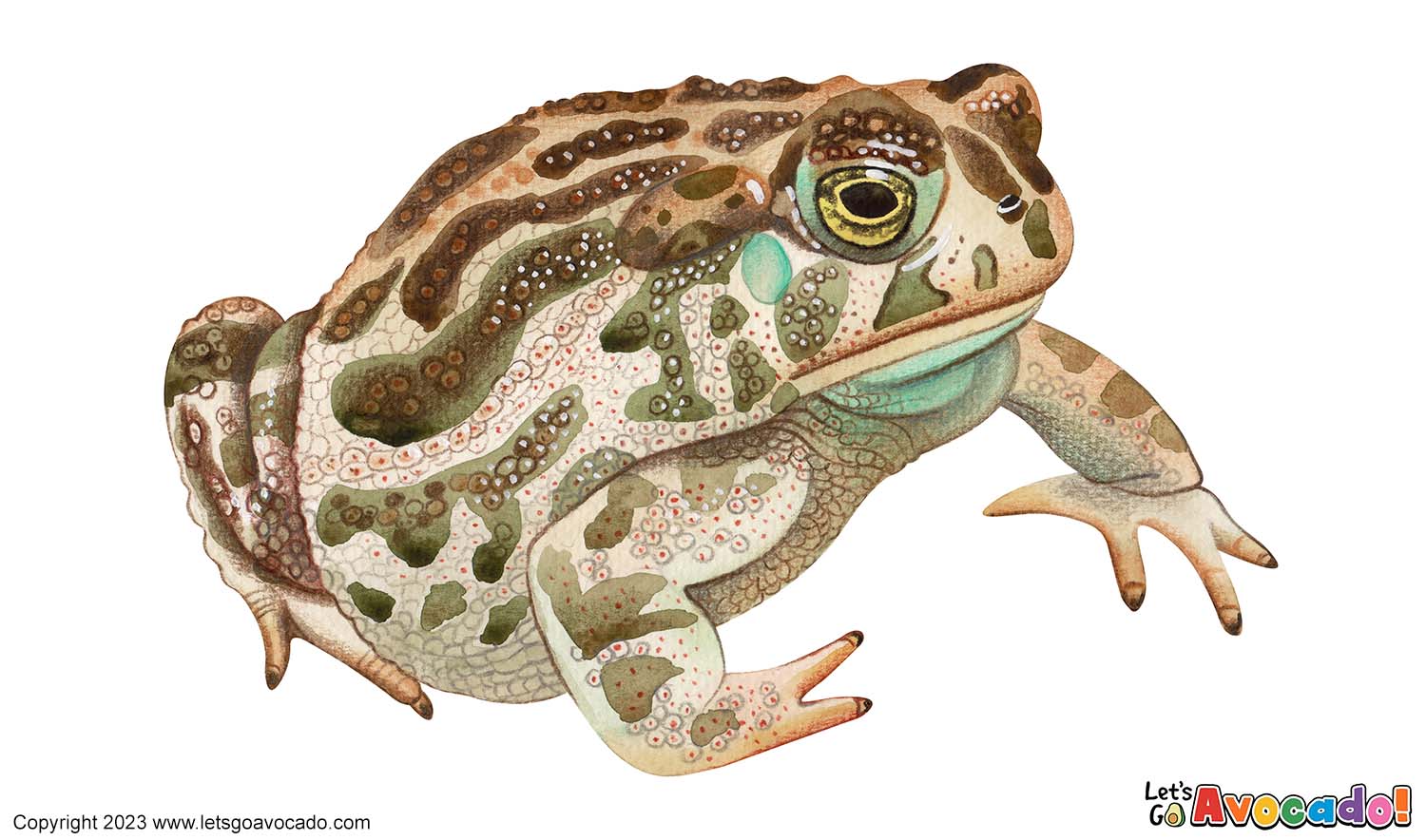

Great Plains Toad
Western Toad, Plains Toad
Anaxyrus cognatus
This page may contain affiliate links.
Read our disclosure and privacy policy here.
The Great Plains Toad (Anaxyrus cognatus) is an amphibian species found in the expansive grasslands and prairies of North America. With its rough, bumpy skin and earthy coloration ranging from sandy brown to olive green, this toad has excellent camouflage in its native habitat. It has a stout body and short legs, making it well-suited for a terrestrial lifestyle. The Great Plains Toad is known for its distinctive vocalizations, which resemble a high-pitched trill or musical whistle and are most commonly heard during the breeding season. It is a skilled burrower, often seeking refuge in the ground during periods of extreme heat or cold. As an insectivore, it plays a crucial role in controlling populations of grasshoppers, beetles, and other insects in its ecosystemAn ecosystem is a community of living organisms, like insects and birds, and non-living components, like water and rocks, that interact with each other in a specific area. Learn More. The Great Plains Toad has a fascinating life cycle, starting as tadpoles hatching from eggs in temporary bodies of water, then undergoing metamorphosis into juvenile toads that eventually reach adulthood. While it faces some threats, such as habitat loss and pollution, conservationThe act of protecting and preserving natural resources and the environment. Conservation efforts are important to protect beavers and their habitats. efforts are in place to protect this unique and valuable species and ensure its continued presence in the Great Plains ecosystem.
Great Plains Toad

There’s a lot to explore right where we are, in our own neighborhoods and backyards! Join us while we get off the couch and explore the everyday wonders of nature, science, space, engineering, art, and anything else we stumble upon during on our adventures.







